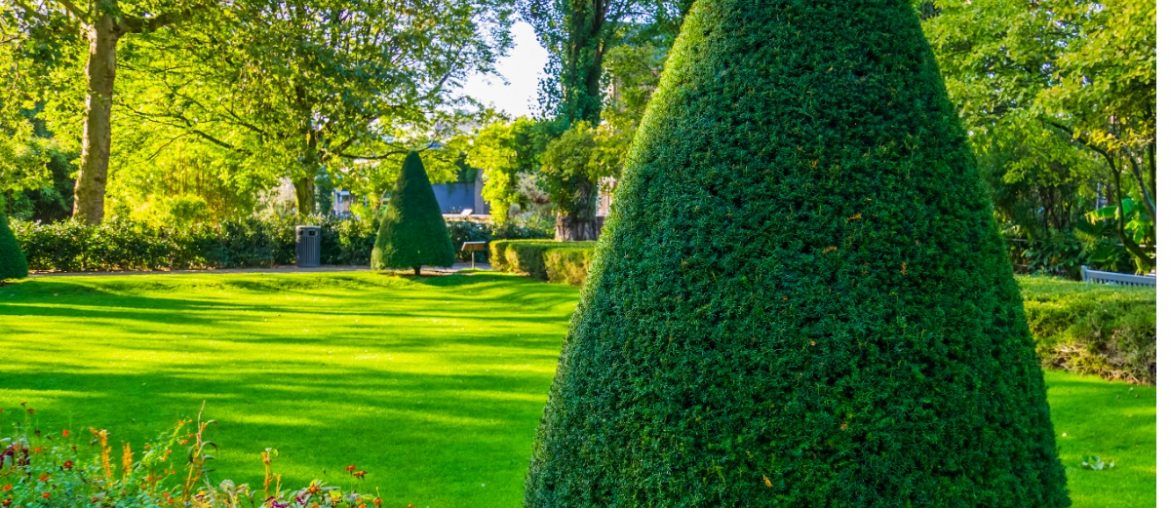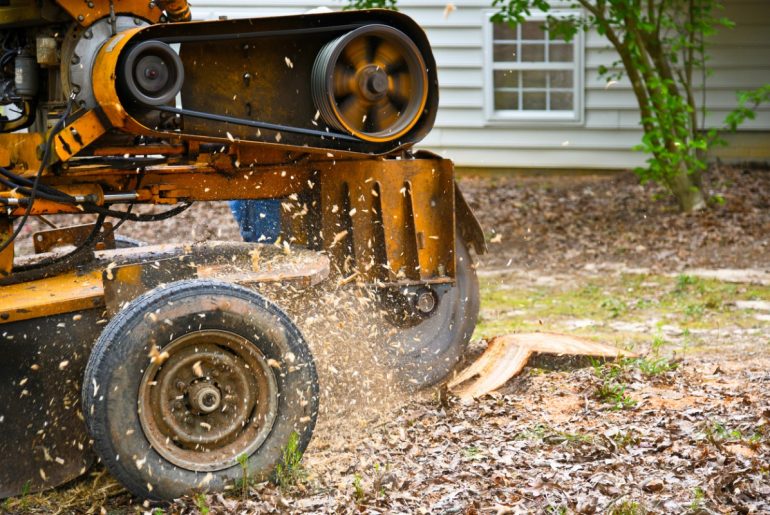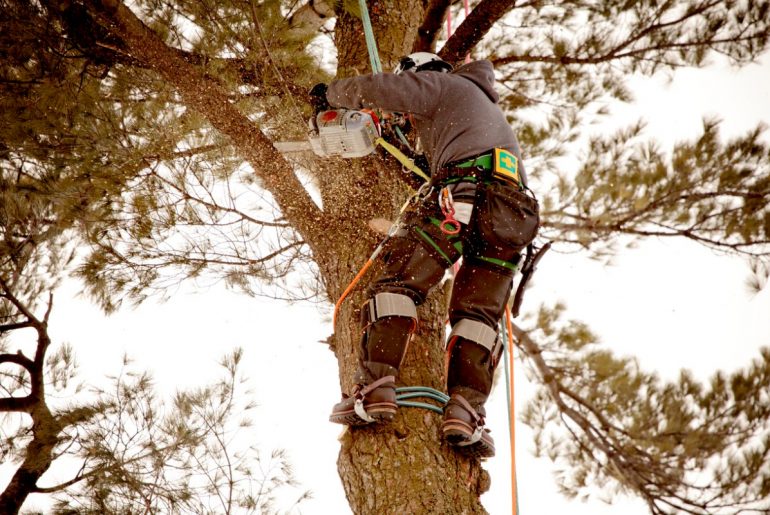Tree trimming is a way to keep your landscape aesthetically pleasing. Overgrown branches make your land look sloppy, and can also allow pests and insects to run rampant in the growth. When insects have free reign over vegetation, they can spread diseases and weaken or kill the plant. Eventually, the bugs will make their way into your building.
Trimming trees will prevent the branches from scraping your paint or siding or falling on your roof. If you’re operating a business, you don’t want the liability of branches falling and hurting people or their property.
Routine maintenance of your trees ensures they grow properly. With regular check-ins, it will be easy to spot any rot or disease in the branches. Then you can have it pruned before it destroys the whole tree. Ongoing care will cost money, but it pays off in the long run.
How Much Does Tree Trimming Cost?
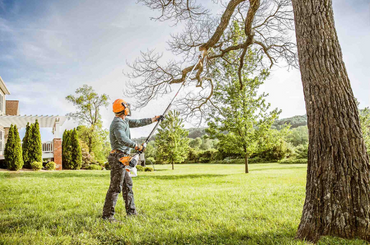
How much does it cost to trim trees? The average cost to trim a tree is about $460, though it can range from $200 to $760 depending on the tree itself. If you have several trees on your property, you might pay close to $1,200 for the service, though some companies will give a discount for more work. They’ve already made the trip to your property, so they won’t charge you an additional $460 per tree.
Luckily, you only need to trim mature trees every three to five years. Keep an eye on them to ensure they stay healthy, and contact the professionals if you see signs of decay. Otherwise, you don’t have to add this expense to your yearly budget. Even young trees only need trimming every two or three years.
Hiring a certified tree trimming company guarantees that you’ll have trees looking strong and healthy after each trim. There won’t be low-hanging branches obscuring your business or entrance. You don’t have to worry about weak limbs falling and damaging property or harming customers. Though the cost isn’t cheap, it’s a necessary expense for safety and peace of mind.
How to Estimate the Cost
How much for tree trimming? What is the average tree trimming cost? There’s rarely a set cost for tree trimming because so many different factors influence tree trimming prices. To figure out the average cost for tree trimming we need to know the size of the tree so we’ll have the equipment and manpower ready to tackle the job. We also need to know how accessible the tree and its branches are. Sometimes it’s hard to get into an area with a swimming pool, ornamental stone or metalwork, or other obstacles.
There’s understandably a difference in cost for one tree compared to two or more, but did you know the health of the tree also factors in? Professionals need to know if the tree is strong and healthy, or if it’s rotting and might be more difficult to safely take branches down. Being prepared for pests also helps us know what we can do to protect surrounding plants and trees during the trimming process.
Size of Tree
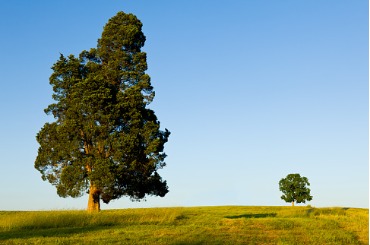
The size of the tree greatly impacts the cost. Small trees, namely those under 30 feet, can cost as little as $75 for professional trimming. Taller trees require more equipment and manpower, so a tree that’s 60 feet tall can cost about $1,500.
The height is a factor because the tree trimming company needs to know what equipment they need. This is especially true if they have to use a cherry picker to reach the tallest branches. The taller a tree, the thicker the branches, so it also takes more effort to trim tall trees.
Tree Type
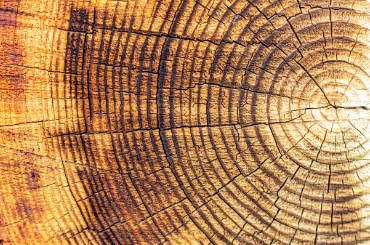
Size is the first thing most people think of when estimating trimming costs. Of course, bigger and taller trees will cost more, but the type of tree also impacts the price. Crepe Myrtle has multiple trunks that need trimming, so the job might take as long as trimming a 60-foot tree.
Hardwood trees, like maple, are tougher to trim because of the strength of the wood. Trimmers have to exert more effort and take more time to trim each branch. That will drive up the cost.
Accessibility
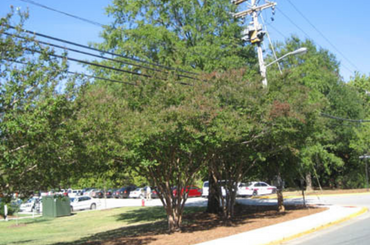
Accessibility of the tree impacts the trimming price because the crews need to get to it easily. Fences, narrow gates or alleys, or other structures can prevent the crew from getting to the tree. If they have to struggle to get to the tree, they’re going to charge for the time it takes to access it in addition to the trimming service itself.
Tree trimmers are aware of how close a tree is to a power line or structure, and that can impact their trimming efficiency. If they have to be extra cautious to not cause damage, the job will take more time and the cost will rise accordingly. Of course, this is worth the cost because you don’t have to worry about losing power or getting the utility company called in for repairs.
If the company can’t get the platform lift or cherry picker bucket close to the tree, they’ll charge more for their time and effort. Sometimes the worker will have to climb the tree to trim it, which makes the cost even higher due to the risk and liability. Having a trimmer climb a tree can raise the price by 25 to 50 percent more than the average tree trimming cost rate.
How Many Trees
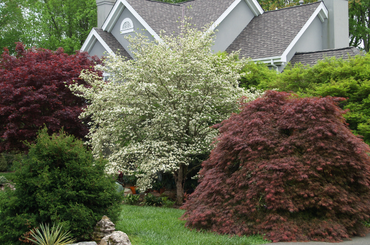
Getting more trees trimmed understandably costs more than getting one tree trimmed. However, you can’t take the average price above and multiply it by how many trees are on your property. You have to assess each tree independently. If some are short and some are taller, each will cost a different amount.
Some companies will give a discount for trimming a number of trees in one trip, though. After all, they’re already on-site and have their equipment ready. If they can access the trees and trim them easily in a block of time, they might cut you a break on the price.
Tree Health or Pests
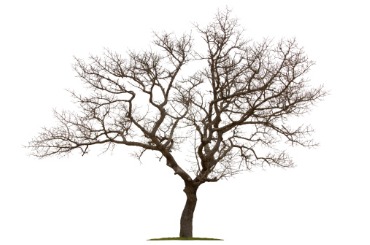
Trees that aren’t healthy are more difficult to trim because the professional needs to be cautious. They might test the soil to see if it’s inhospitable to the tree’s roots. Some professionals will prune the roots to keep them from spreading too far from the trunk.
Professionals can spray for pests if they’re damaging the tree. Sometimes they’ll catch the pests before they damage more of the tree or your surrounding landscape. You’ll have to pay for this additional service, as well as the soil test and root pruning previously mentioned.
Healthy trees are more straightforward to trim and the professionals don’t need to be as cautious. They’ll be able to access your tree easily and trim the branches without needing to perform extra services, keeping your overall cost down.
Season

It goes without saying that the season you have your trees trimmed matters as much as the other features on this list. If you’re trying to shape up your landscape during the peak season, you’re going to pay more to fit into the company’s schedule. Even then, you might have to wait several weeks before they have time to get to you.
Winter is usually the best time to trim most trees because they’re dormant. If you’re trying to trim your trees anytime from November to March, you might have to wait in line. It’s easier to see the tree’s structure and give it optimal trimming. The branches are less likely to have insects spreading disease, so you can safely trim them and keep them healthy.
However, trees that flower in the spring are on a different timetable. If you have trees such as dogwoods, magnolias, or redbuds, you want to wait until they bloom.
Quality tree trimming professionals know how to trim trees during all seasons. You won’t necessarily have to wait until winter to schedule the service. Consider calling someone out to assess your property and give an estimate. They’ll recommend the best time to trim while they’re inspecting the trees.
Note that the winter recommendation applies only to trimming trees. Pruning trees cut off dead or dying branches and this can happen anytime you notice an issue with your tree. Waiting for the dormant season will only put the entire tree at risk.
It’s also worth noting that you’ll pay more for tree-trimming services after severe weather. Everyone in your area will have fallen limbs and be overly critical of their trees. They’ll want the professionals to come out and trim or prune their trees before the next storm. Trying to schedule service during this time could be difficult and will definitely be expensive.
How to Know If Your Tree Needs Trimming
You can check your tree to see if it needs trimming without calling the professionals out for an assessment. These tips will help you decide if you need to trim the tree or if you can wait until your next scheduled service.
Check the Growth
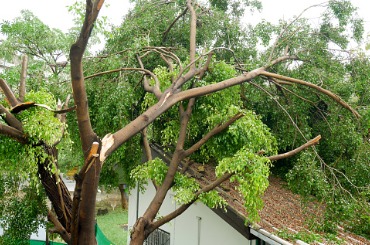
You don’t want trees to grow too tall or the branches to get too long and hang down. Visually inspect trees every month or so to make sure it’s a manageable size. As soon as you notice it’s getting overgrown, call for a tree trimming service. Catching it early will keep the tree looking nice and cut down on the risk of pest infestation or decay.
In addition to looking for overgrown branches, look for unusual growth. Branches growing at strange angles might have internal rot, making them a safety risk for your business. Elm and maple trees are especially at risk for growing weak branches, so you’ll want to keep an eye on those types.
Look for Signs of Disease
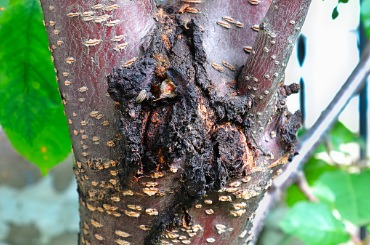
Beyond checking for unusual growth as a sign of disease, you can also check for discoloration of the leaves and branches. Spots, where fungus grows on the bark, can also indicate decay. Some fungi may present as lesions growing on leaves or powdery mildew or blisters.
Fungi prevent oxygen and nutrients from getting to your tree, so it’s important to regularly check for signs of disease. If you notice any growth like this, contact your tree service immediately. They can trim the infected spots and treat the tree and soil as needed to ensure it grows stronger.
Inspect After a Storm
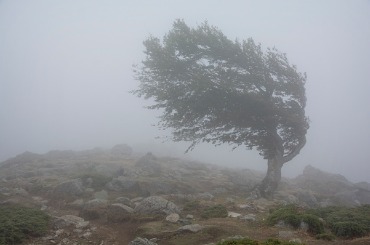
Even if you check your tree every week or month, you always want to take a more thorough look after a storm or any inclement weather. Strong winds and rain can dislodge weak limbs so they’re hanging precariously in the treetop. A further wind could send them tumbling to the ground, taking out more limbs and possibly damaging property or hurting people in the area.
A storm might blow off smaller branches and leaves so you’ll feel hesitant to trim your tree further. It might look sparse or patchy until new growth comes in, but your tree will enjoy long-term health and your property will be safer in the meantime.
Heavy rains can cause flooding, so you should also check the roots of your tree after a storm or bad weather. Too much water can rot the roots. Professional tree services have treatments to help with this if the damage isn’t too severe, so it’s important to check early and often. Otherwise, they might have to completely remove the tree.
Start Using Tree Service Software!
Related Tree Services
Thinking about how much to trim a tree isn’t all you need to consider when you contact a tree trimming service. You might also find that some of your trees have diseased portions. You’ll need to cut them down, so knowing about your tree removal options will help you make the best decisions for your property.
If you need to have a tree removed, that’s only part of the job. The stump gets left behind. Some people keep stumps in residential areas because kids like to play on them, but you don’t want a stump on a business property. It’s a liability because people could trip over it. Therefore, you’ll need to consider having the stump ground up or completely removed.
You can talk with your tree trimming service about bundling these services when you need them. If they’re already coming to your property to trim trees, you might get a discount on removals or grind as well.
Tree Removal
Removing a tree might be necessary if your tree is rotting, diseased, or overrun with insects. Even a rotting branch can spread disease to the rest of the tree, so it’s best to remove it completely.
Insects living in and on a tree will eventually find their way into your business or home, so you want to eliminate that possibility. Otherwise, you’ll end up with a dangerous, decaying tree as well as an internal pest infestation. The cost of solving these two problems will be much higher than simply removing the tree when you first notice the signs.
Like tree trimming, the cost of tree removal will vary depending on the size of the tree. You can expect a tree removal to cost anywhere from $300 to $1,000 for average-sized, mature trees.
Removal of small trees might only cost $150, while larger trees can cost close to $2,000. This increase is because the service has to carefully remove branches first before they can start cutting down the trunk. They work in small increments for safety, so the job takes much longer.
Stump Grinding
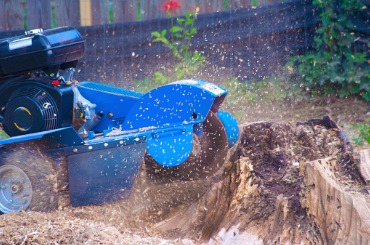
Having your tree removed is only part of the issue. Tree trimmers can’t cut a tree at ground level, so there will always be a stump left behind. You can get rid of the stump with stump grinding or stump removal.
Stump grinding is a process that chops the stump into small wood chips. The machine reaches well below ground level so there’s no stump poking out of the soil. However, the soil doesn’t get any nutrients, so it’s not recommended to plant anything over the ground stump because it’ll die.
After they grind the stump, you’ll have a hole that you need to fill with soil to keep it even with the ground around it. You can also choose to leave the wood chips in place so they’ll decay into the soil.
There will still be roots and trunk material in the soil, so be careful if you plan to pave over or build on the stump’s area. It’s not as solid as other ground, so it will settle as it decays, which can ruin the foundation if you’ve built over it.
Stump grinding can cost anywhere from $150 to $450 depending on the stump size, depth, and accessibility. If you have additional stumps to remove, they’ll likely cost less than $100 extra. It’s a good idea to hire professionals to grind stumps if they’re a safety hazard on your property. They can also start to rot away and reduce your landscape’s aesthetic appeal without removal.
Stump Removal

Stump removal eliminates all traces of tree trunks and roots from the soil. As a result, it makes a bigger hole than stump grinding leaves behind. You also pay more for this service as it requires more equipment and time, and is more invasive.
On average, you can expect to pay about $300 for stump removal, but it can range from $75 to $1,000 depending on facts like size and accessibility.
There are several cases when you’ll want to spring for stump removal instead of grinding. If a stump is in the way of where you want to install a fence or structure, removal is better than grinding. You’re able to pack the hole with natural soil to have a solid foundation for building supports.
If you removed a tree because its root system was interfering with your building, plumbing, or landscaping, you need stump removal as well. This process takes out all the roots, whereas grinding only breaks up the stump itself.
Should You Do It Yourself?
When you see the average cost for tree trimming getting close to $500, you might think it’s cheaper to do it yourself. But before you take on this chore, you need to know that it’s a lot of work. You need to be strong enough to do it safely, without harming yourself or damaging the tree or surrounding property.
DIY vs. Professional
Unless you have a lot of tree-trimming equipment at your disposal, you’ll have to rent the saws, loppers, and safety equipment yourself. You might have a wheelbarrow, safety goggles, work gloves, pruning shears, and steel-toe boots already. But you’ll also need items such as:
- Hard hat
- Loppers
- Chainsaw
- Pole saw
- Harness and climbing rope
Renting the necessary tools can add up quickly. Many places rent equipment for a full day, so you pay that price even if you can finish the job in a few hours. On the other hand, the task might take longer than you’re expecting, so you have to extend the rental for another day, doubling your expenses.
You need to know how to trim the tree as well. If you cut branches too short, you could damage the tree and prevent it from growing strong and healthy in the future. Not trimming the tree enough means you went through all that effort without making a difference.
Using a chainsaw while you’re working on a tall tree is difficult. Even if you’ve used one on the ground before, it’s completely different working off the ground. You’re at risk of severely hurting yourself. Struggling with large or thick branches makes this harm more likely.
The bottom line is that it’s better to hire a professional for your tree trimming needs. They have the equipment and experience to do the best job on your landscape. They can assess potential threats and treat them so your tree stays strong.
The cost might be $500 or more, but when you add up rental fees and your time, you’re going to pay at least that much to do it yourself. When you factor in safety concerns, it’s ideal to factor this service into your budget so you can sit back and let someone else take care of it.
Frequently Asked Questions
Knowing the cost of tree trimming gives you an idea of what to expect when scheduling this service. In case you still need more information, check out the answers to these frequently asked questions.
What happens if you don’t trim your tree?
If you don’t trim your tree, the branches and leaves will start looking unwieldy. The branches will continue to grow and might interfere with the power lines on your property. They can scratch window panes, building siding, or exterior paint.
For businesses and houses with outdoor spaces like decks and patios, an untrimmed tree can decrease people’s enjoyment. The tree might shed leaves where they’re sitting. The branches can dangle in their line of sight or they can bump their heads when they stand up.
Overgrown trees can cause a lot of damage. Long limbs are more susceptible to disease and decay. The weight of the branch itself can also make it droop until it falls. A rotting branch falling from a tree can hurt a person passing by. They can also damage nearby cars or property. This risk is a huge liability that can cost more in medical and legal fees than regular tree trimming.
Untrimmed trees also look unkempt. If you want your property to look professional, clean, and well-maintained, tree trimming is part of the package. Many landscaping services offer trimming in addition to lawn mowing and other routine maintenance, so you can see how important it is. You wouldn’t let the grass grow a foot high, so don’t let your trees get overgrown, either.
What’s the difference between tree trimming and tree pruning?
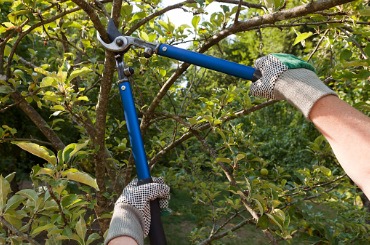
Both tree trimming and tree pruning are ways to maintain your trees to keep your landscape looking great. But there are some key differences between the two services, so you want to make sure you’re asking for the right option.
Tree trimming is a way to keep your tree looking robust and bright. Trimming overgrown trees keeps them growing properly with branches full of leaves.
Tree pruning protects the health of the tree. When you have rotting or dead branches, you want to prune them so they don’t cause the rest of the tree to deteriorate.
How often should you trim your trees?
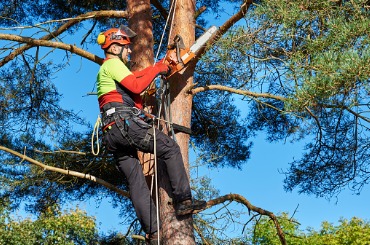
The frequency of tree trimming varies greatly depending on the type of tree you have. Young trees should have a trim every two or three years. Once a tree matures, you’ll only need to trim it every three to five years.
Evergreen trees can go much longer without needing a trim. Fruit trees, on the other hand, need yearly trimming since they’re producing fruit. Your tree trimming professional will know how often your trees need service. As long as you’re keeping an eye on the trees, looking for overgrowth and disease, you’ll be on track to have healthy trees on your property.
Final Notes
Knowing the average tree trimming cost helps you understand what to expect when you schedule this service. The factors listed above, like tree size, type, and accessibility, can help you assess your property to get an idea of what you might pay. Contact your tree trimming professionals now to keep your landscape looking clean and healthy.

